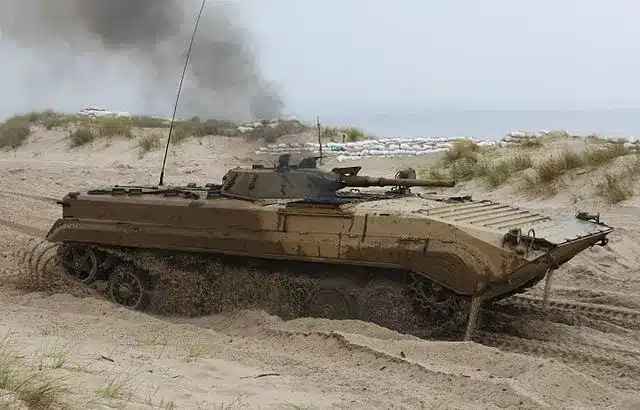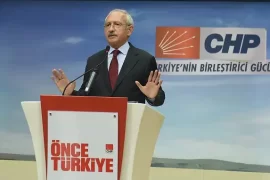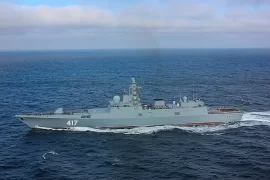The BMP-1 Infantry Fighting Vehicle (IFV) made its debut in the early 1960s, marking the start of a new era in armored warfare. Entering service with the Soviet Army in 1966 and unveiled to the world in 1967, the BMP-1 generated considerable interest and set new standards with its unique blend of mobility, protection, and firepower. Over 20,000 of these iconic IFVs were produced, and it served as the benchmark for armored vehicles throughout its production life, which lasted until 1988.
Global Reach
The BMP-1 became a symbol of Soviet military power and found its way into the arsenals of nations around the world. Production extended beyond the Soviet Union, with countries like China, Czechoslovakia, and Romania also manufacturing their versions.

This widespread adoption resulted in a plethora of variants tailored to meet various combat requirements, from artillery observation to armored engineering.
Combat Legacy
Throughout its service history, the BMP-1 saw action in numerous conflicts, earning a reputation for its ruggedness and versatility. Surprisingly, it still remains in active service with over 30 operators worldwide, excluding Russia, where it saw a resurgence in usage in 2022 due to the conflict in Ukraine. Initially retired in 1983, these old warriors resurrected for modern warfare.
BMP-1: Design and Flaws
The BMP-1’s low silhouette and combination of features made it a revolutionary design in its time. However, this innovation came at a cost—its interior was cramped for the occupants, and its main armament was less potent than initially believed. Despite these issues, the BMP-1’s legacy endures.
Firepower
Equipped with a one-man low-profile turret, the BMP-1 featured a magazine-fed 73 mm smoothbore gun as its primary armament. This non-stabilized gun had limited range, firing accurately only when stationary. Its maximum aimed range was 1,300 meters, and direct fire range was only 765 meters. The gun fired High Explosive (HE) and High Explosive Anti-Tank Fin Stabilized HEAT-FS (HEAT-FS) rounds, with the latter capable of penetrating 335-400 mm of steel armor. The BMP-1 also featured a coaxial 7.62 mm machine gun for additional firepower.
Some early BMP-1 models had a barrel-mounted 9M14 Malyutka (AT-3 Sagger) wire-guided missile. This proved to have in different performance. It was later removed. In 1979, the BMP-1P was introduced, featuring a more advanced Fagot (AT-4 Spigot) or Konkurs (AT-5 Spandrel) Anti-Tank Guided Weapon (ATGW) launcher with improved range and penetration capabilities.
Protection and Interior
The BMP-1’s welded steel armor hull provided all-round protection against 12.7 mm rounds and artillery shell splinters. Frontal armor partially protected against 20 mm rounds. It also featured an automatic fire extinguishing system and NBC protection.
With a crew of three (commander, gunner, and driver) and room for 8 fully-equipped troops, the BMP-1 aimed to be a true infantry fighting vehicle, supporting dismounted troops with its weapons. However, the limited internal space was a drawback.
Power and Amphibious Capability
The BMP-1 was powered by a UTD-20 turbocharged diesel engine, delivering 300 hp. It was fully amphibious, using its tracks for propulsion in water. However, the Russian military rarely exploited this capability due to various operational challenges.
Variants and Legacy
Over its production life, the BMP-1 underwent numerous modifications and spawned variants tailored to specific needs. Variations included extra armor, more powerful engines, and the Chinese Type 86 copy. Production ceased in 1983, but the BMP-1 continues to be an enduring symbol of Soviet military engineering and innovation.
BMP-1 Variants
BMP-1P: Improved version featuring the Konkurs ATGW launcher.
BMP-1K: Command vehicle.
BMP-1KSh: Command and staff vehicle with a telescopic mast.
PRP-3 Val: Artillery reconnaissance vehicle.
PRP-4 Nard: Artillery reconnaissance vehicle.
BRM-1: Armored reconnaissance vehicle.
BREM-2: Armored recovery vehicle.
IMR Zhuk: Armored engineering vehicle.
BTZ-3: Armored refueler.
RM-6: Armored repair vehicle.
BMP-2: A successor with improved firepower, including a 30 mm cannon, introduced in the late 1970s. BMP-3 is an improved version of BMP-2
BMP-1AM Basurmanin: An upgraded version with a new 30 mm turret and advanced features.
BWP-1: The Polish designation for the BMP-1, widely used by the Polish Army.
Summary of the BMP-1
In conclusion, the BMP-1 Infantry Fighting Vehicle, with its pioneering design and formidable capabilities, left an indelible mark on the world of armored warfare. Despite its limitations, this iconic vehicle continues to play a role in modern conflicts, and its enduring legacy is a testament to its impact on military history.







